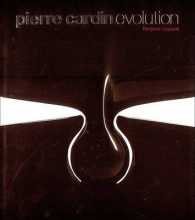Full Description
For NA courses or certificate courses specific to Home Health. Updated and expanded to reflect the issues and situations encountered by today's home health aide, this text guides students through all vital aspects of their jobs in a simple, focused manner and teaches them to be efficient, caring members of the health-care team. Written in a conversational style, it covers everything from the fundamentals of anatomy and physiology to corporate compliance, ethnic diversity, patient satisfaction, palliative care, and makes strategic use of easy-to-follow narratives, step-by-step procedures, margin glossary, and many concept-supporting illustrations and photographs throughout with examples from real life situations. This text is ideal as both a primary learning tool for beginning aides as well as a handy refresher and reference for more experienced workers. It encourages critical thinking, situational and reality-based decision making.
Contents
Chapter 1 Orientation to Home Care Industry Section 1Agency Section 2: Your Job as a Homemaker/Home Health Aide Chapter 2 Communication Skills Section 1: How we communicate Section 2: Client Observation, Recording, and Reporting Section 3: Teaching your Clients Chapter 3 Working with People Section 1: Basic Human Needs Section 2: Family Section 3: Working with Clients Who are Ill or Have a Disability Section 4: Mental Health and Mental Disability Section 5: Substance Abuse Chapter 4 Caring for a Geriatric Client Section 1: Aging Section 2: Special Considerations in Caring for the Elderly Chapter 5. Working with Children Section 1: Basic Needs of Children Section 2: Child Abuse Section 3: Developmental Disabilities Section 4: Newborn and Infant Care Chapter 6 Care of the Dying in the Home Section 1: Dying Section 2: Physical Care of the Dying Section 3: Postmortem Care Chapter 7 Anatomy and Physiology Section 1: An Introduction to Anatomy and Physiology Chapter 8 Infection Control in the Home Section 1: Medical Asepsis in the Home Section 2: Handwashing Section 3: Disinfection and Sterilization Section 4: Special Infection Control and Isolation Precautions for Transmittable Diseases Section 5: Regulated Medical Waste Chapter 9 Care of the Client's Environment Section 1: Homemaking Section 2: Bed Making Section 3: Safety and Fire Protection Section 4: Restraints Section 5: Making your own Equipment Chapter 10 Planning, Purchasing and Serving Food Section 1: Basic Nutrition Section 2: Planning, Shopping, and Serving a Meal Section 3: Therapeutic Diets Section 4: Feeding a Client Chapter 11 Basic Body Movement and positions Section 1: Body Mechanics Section 2: Client's Daily Level of Ability Section 3: Positioning a Client in Bed Chapter 12 Skin Care Section 1: Basic Skin Care Section 2: Decubitus Ulcers (Bedsores) Section 3: Basic Foot Care Section 4: Radiation and Chemotherapy: Effects on the Skin Chapter 13 Personal Care Section 1: Oral Hygiene Section 2: Assisting a Client to Dress Section 3: Bathing a Client Section 4: Giving a Back Rub Section 5: Hair Care Section 6: Shaving a Client Section 7: Assisting a Client with Toileting Section 8: Perineal Care Section 9: Postpartum Care Chapter 14 Rehabilitation of the Client Section 1: Introduction to Rehabilitation Section 2: Working with A Physical Therapist Section 3: Speech and Language Therapy Section 4: Dealing with a Hearing Loss Section 5: Working with an Occupational Therapist Chapter 15 Measuring and Recording Vital Signs Section 1: Vital Signs Section 2: Measuring Temperature Section 3: Measuring a Pulse Section 4: Measuring Respirations Section 5: Measuring Blood Pressure Section 6: Pain Management Chapter 16 Intake and Output Section 1: Fluid Balance Section 2: Fluid Intake Section 3: Fluid Output Section 4: Forcing and Restricting Fluids Section 5: Straining Urine Chapter 17 Specimen Collection Section 1: Specimen Collection Section 2: Collecting Urine for a Specimen Section 3: Collection of a Stool Specimen Section 4: Collection of Sputum Chapter 18 Special Procedure Section 1: Assisting with Medications Section 2: Nonsterile Dressings Section 3: Care of the Indwelling Catheter Section 4: Care of the External Urinary Drainage Section 5: Intravenous Therapy: Peripheral or Central Section 6: Cast Care Section 7: Assisting with Ostomy Care Section 8: Assisting a Client Having a Seizure Section 9: Testing for Glucose (Sugar) and Acetone Section 10: Deep-Breathing Exercises Section 11: Making a Normal Saline Section 12: Hyperalimentation Chapter 19 Common Diseases You Will See Section 1: Hypertension Section 2: Heart Attack/Myocardial Infarction Section 3: Angina Section 4: Diabetes Section 5: Cerebrovascular Accident Section 6: Arthritis Section 7: Cancer Section 8: Alzheimer's Disease Section 9: Chronic Obstructive Pulmonary Disease Section 10: Neurological Disorders Section 11: Tuberculosis Section 12: AIDS (Acquired Immune Deficiency Syndrome) Chapter 20 Emergency Procedures Section 1: What an Emergency Is Section 2: Restoring Breathing Section 3: Stopping External Heavy Bleeding Section 4: Poisoning Section 5: Shock Section 6: Burns Section 7: Heart Attack Section 8: Stroke/Cerebrovascular Accident Section 9: Natural and Manmade Disasters Abbreviations Appendix: Answer Key for Certification Review Questions Glossary Index








